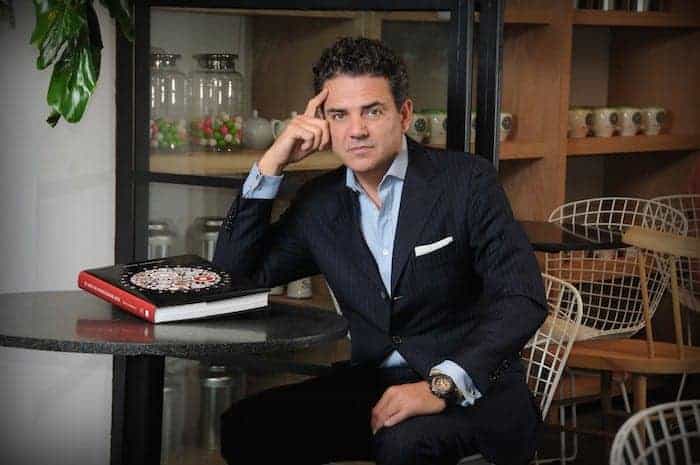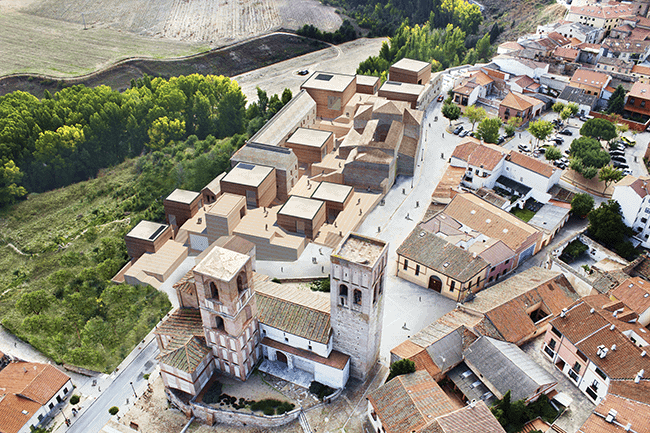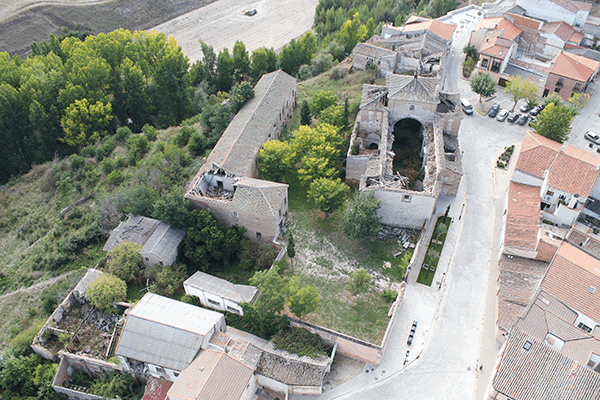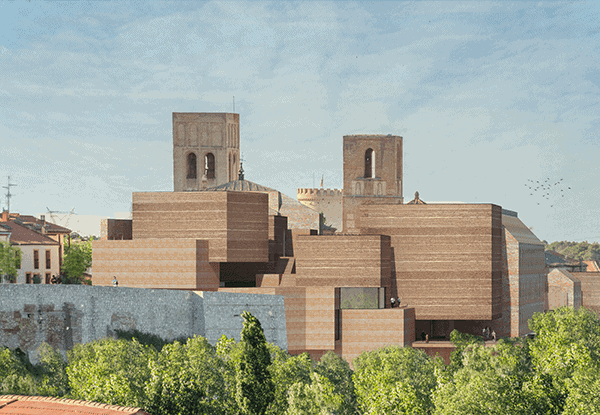Deloitte | Case Study | Artistic patronage harmonizing finance & culture
The Charitable Museum Endowment Fund Artistic patronage harmonizing finance and culture

Javier and Lorena Lumbreras had a dream; rescuing a splendid 16th-century Jesuit school, Saint Nicholas Church and other adjacent buildings in a state of ruin and disrepair, along archaeological medieval and Roman findings, located in Arévalo, Spain.
The key motivation behind is the creation of COLLEGIUM, a place destined to generate social change, sustainable intellectual stimulation, the perpetuation of community well-being while building a legacy for their family. The ambitious scope of the project led to the creation of The Charitable Museum Endowment Fund, an open-ended hedge fund that aims to reduce or permanently eliminate a museum’s dependency on its founder’s resources, while also creating a network through which museums can share resources and innovations. The following case study explores the creation of Spain’s most ambitious private museographic project of the 21st century since the Thyssen-Bornemisza Museum in Madrid, along with the investment vehicle that will render this endeavor financially stable.
Scheduled to open in 2020, COLLEGIUM will be one of the first museums to integrate the cultural and economic structures of its locality with its values and operative system. This project will not only become the permanent home of the Adrastus Collection—which comprises over 600 artworks by 150 artists from five continents curated by Patrick Charpenel— but will also create an exchange platform with the region’s public museums as announced by the government and summarized in a protocol signed last June.
The guiding principle behind COLLEGIUM is critical museology where the aim is to capture the radical nature of the most important manifestations of 21st century art and the history of the site.




The following case study explores the creation of Spain’s most ambitious private museographic project of the 21st century since the Thyssen-Bornemisza Museum in Madrid, along with the investment vehicle that will render this endeavor financially stable.
As a laboratory of experiences, and research center, COLLEGIUM depicts a society of revitalized communities where all people—local residents and visitors alike—are inspired by the transformative power of art to shape our understanding of ourselves and improve our collective quality of life.
A total surface area of 12,020m2 will house COLLEGIUM’s ambitious program, comprising 4,000m2 of exhibition space, 3,300m2 of public space, 1,300m2 of archive and research areas, 750m2 for workshops and artists’ residencies, 2,000m2 for other facilities (including a specialized conservation center), and 250m2 for the foundation’s hub. The project will create a connected space in which the thread of history is woven into the reality of modern culture. This experimental museographic concept projects itself into the 21st century breaking away from the traditional white-cube appearance by blurring the boundaries between the exhibition, production, conservation, and research areas and creating a dynamic relationship among them.
Designed by the acclaimed Mexican architect Tatiana Bilbao, the museum aspires to be part of a multicultural and plural experience in which the city of Arévalo is the jewel in the crown.
The Fundación Lumbreras—Colección Adrastus soon realized that this undertaking would be highly challenging. Not only because it involves the laborious restoration of 16th-century ruins – amongst the new building additions– but also because the time and financial resources available could not be forever capable of subsidizing the operational expenses and financing the ambitious program planned for COLLEGIUM in the absence of its founders. Museums are becoming more than mere places to exhibit objects. Nowadays, they act as agents of change and development in the community through the creation of innovative programs, stimulating projects and educational events that encourage social well-being. With the creation of over 317 contemporary art museums in the last 15 years, the competition for grants from governments and private foundations has never been tougher, and this has now become a serious concern among most private and public museum endowments around the world. Some performance limiting factors in fundraising are: (i) a lack of governmental and private donors, (ii) aging boards, (iii) rising operational costs associated with recruiting and retaining top talent, and (iv) the escalating price of ambitious art programming. That is why Javier Lumbreras created The Charitable Museum Endowment Fund.
The Master Fund is expected to run into the billions of dollars and will maintain a diversified portfolio of wholly and partially owned art investments with varying holding periods.
With a strong background in art and finance and a deep concern to build a self-sustaining mechanism for his own foundation’s sake, Lumbreras decided to create a charitable investment vehicle to assist collections, foundations and existing museums in the creation and funding of their respective permanent endowments.
With over 30 years of experience in the art market and having successfully launched and closed the Artemundi Global Fund (17.02 percent average return per annum), Lumbreras realized that it was time for the art market to give something back to the art world. The Charitable Museum Endowment Fund’s main objective is to produce investment returns to fund nonprofit endowments for museums and other cultural institutions. The uses of resources include, but are not limited to, creating and maintaining programs and acquisitions for permanent collections, expansion, or renovation schemes; improving visitor services; and even balancing budget deficits.
The Charitable Museum Endowment Fund’s assets are being invested in a well-diversified portfolio of fine art pieces by universally recognized artists. The main investment objective of the partnership is to earn an attractive rate of return and seek capital appreciation for socially responsible, community-minded members. The Master Fund is expected to run into the billions of dollars and will maintain a diversified portfolio of wholly and partially owned art investments with varying holding periods.
The Master Fund’s capital is being invested in artworks from artists with proven track records from the late 19th and early 20th centuries, including artistic categories such as Impressionism, Post-Impressionism, and Modernism. In addition, a significant percentage of the Master Fund’s portfolio also comprises blue-chip Post War and Contemporary art with a solid secondary market. The Charitable Museum Endowment Fund provides a much-needed collaboration to artistic patronage aiming to increase social welfare.





